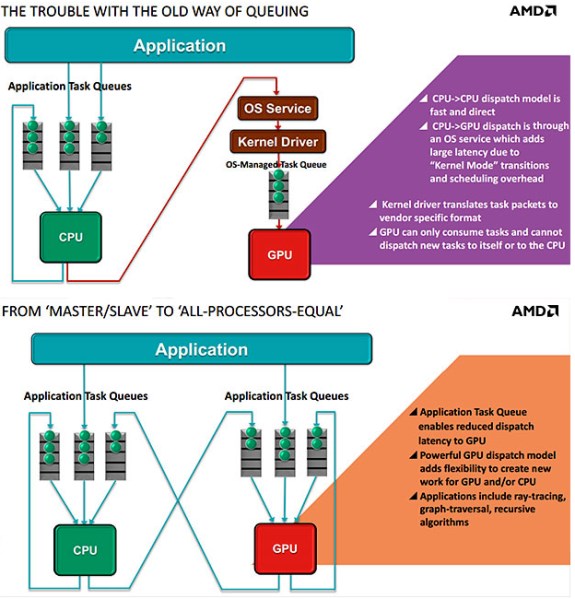
Posted on Tuesday, October 22 2013 @ 12:31 CEST by Thomas De Maesschalck
The Tech Report
writes AMD shared a bit more information about its Heterogeneous Systems Architecture are. In the two slides below, AMD explains how its heterogeneous queuing (hQ) technology is supposed to work. This technology promises to make the CPU and the GPU equal partners, allowing both components to generate tasks for themselves and for each other, without going through the OS first.
Windows will be the first operating system to support hQ but AMD is also working with Linux providers on implementing hQ.
Heterogeneous queuing aims to make the CPU and GPU equal partners. It allows both components to generate tasks for themselves and for each other. Work is packaged using a standard packet format that will be supported by all HSA-compatible hardware, so there's no need for software to use vendor-specific code. Applications can put packets directly into the task queues accessed by the hardware. Each application can have multiple task queues, and a virtualization layer allows HSA hardware to see all the queues.
AMD's current hQ implementation uses hardware-based scheduling to manage how the CPU and GPU access those queues. However, that approach may not be required by the final HSA specification. Although hQ is definitely part of the spec, AMD says the OS could get involved in switching the CPU and GPU between the various task queues.


